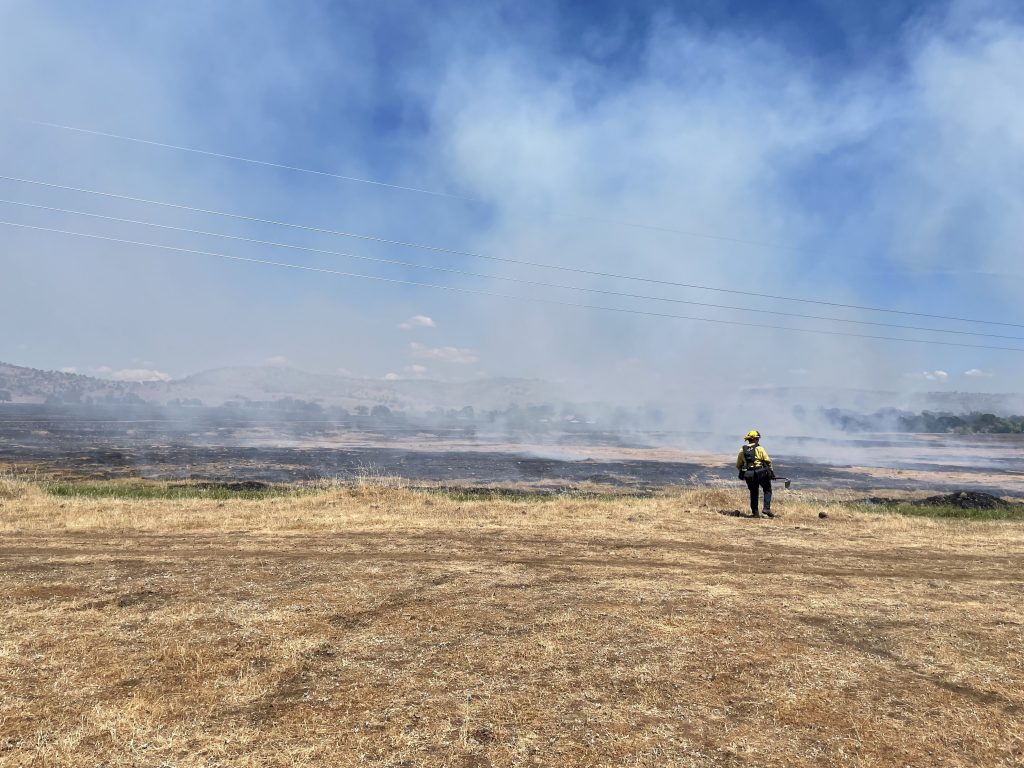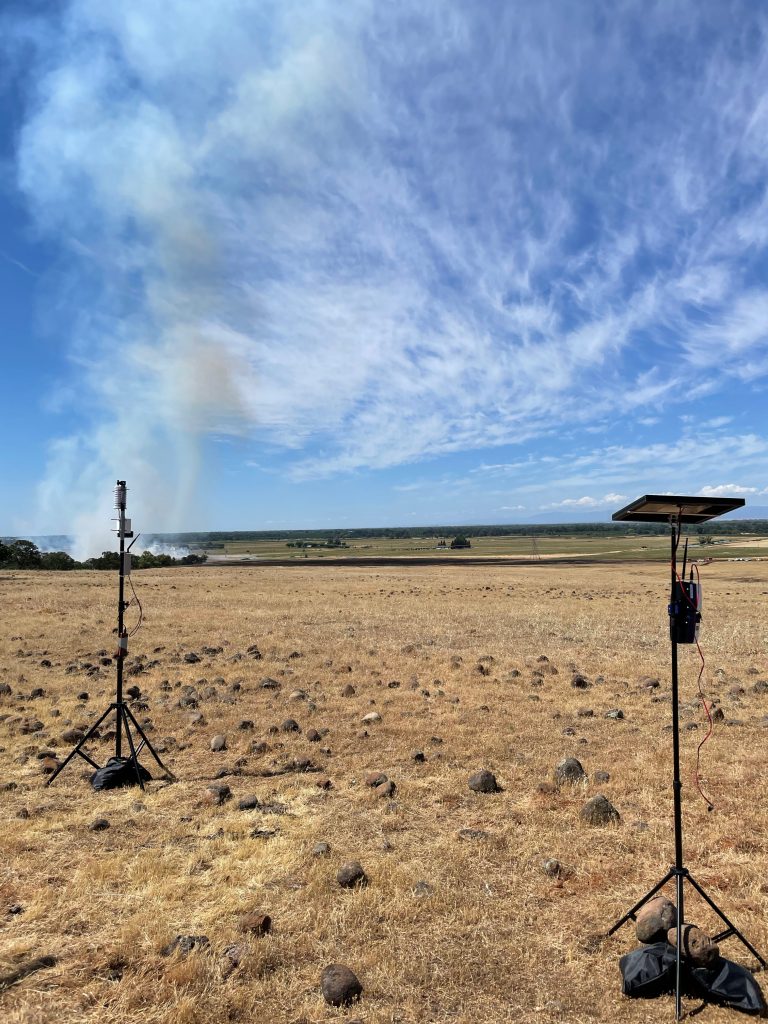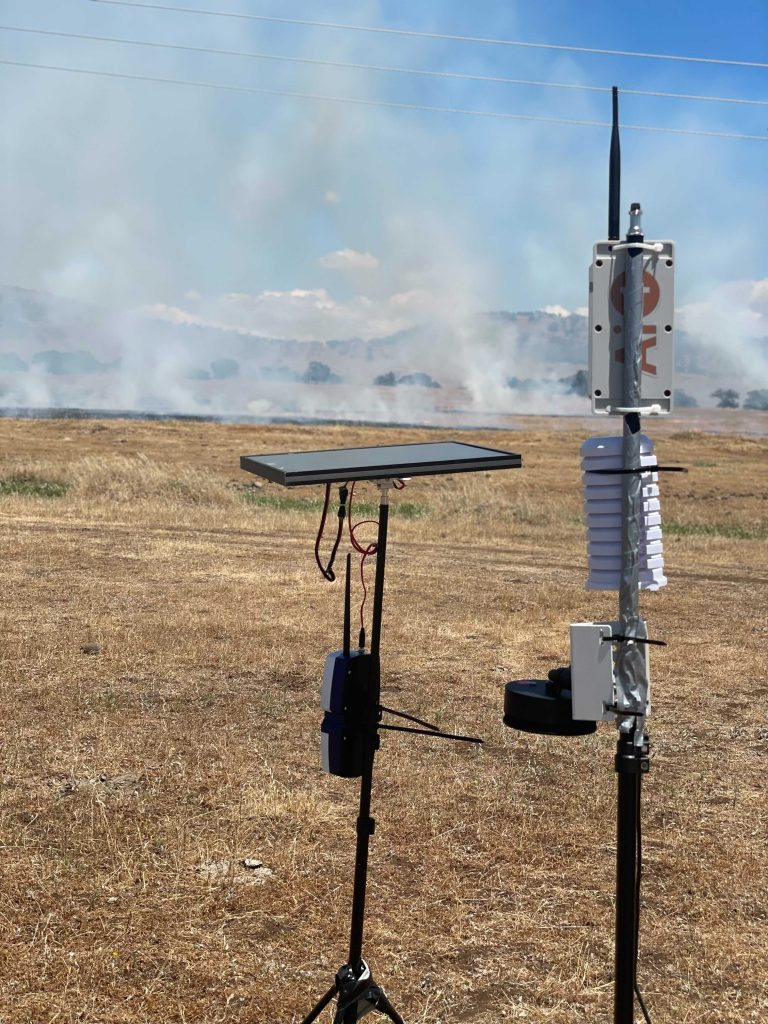
TechNexus Venture Collaborative, as part of the Smart Cities Internet of Things Innovation (SCITI) Labs initiative, successfully executed Phase II of S&T’s Wildland Urban Interface (WUI) wildfire sensor program. The collaborative SCITI Labs is a partnership with the Department of Homeland Security Science and Technology Directorate. This effort aims to innovate smart IoT solutions supporting autonomous navigation, intelligent building sensors, body-worn communications for first responders, wildland fire detection, flood detection, and vehicle inspection systems.
Phase II of the WUI wildfire sensor trials selected four industry partners from the private sector to participate in laboratory and field testing throughout the past 12 months. Most recently, a prescribed burn demonstration was conducted to validate capabilities in a real-world setting. More details can be found here.
“The evaluation was conducted during a controlled, prescribed burn at the Dye Creek Preserve near Red Bluff, California, in partnership with the California Department of Forestry and Fire Protection (CAL FIRE) and The Nature Conservancy. Additional observers included partners from the California Governor’s Office of Emergency Services and the U.S. Fire Administration (USFA).
The prototype sensors were deployed at various distances from the ignition point and were monitored to establish time and distance for alert generation. The demonstration provided further evidence that the sensor technologies can provide a valuable resource for first responders and the public at large.”

The prototypes emerged successful in detecting wildfires from both near distances as well as several miles out, withstanding multiple conditions. The White House released a statement on the progress of the program.
“One of our biggest takeaways from the outdoor burn demonstration was how important these sensors are to first responders and the community,” says TechNexus program manager, Ellie Davis. “To be able to showcase successful, early detection sensor technology and to see the excitement from those groups, demonstrates the importance and impact of this program.”

Early detection sensors, IoT wearables, and other network-connected devices are becoming more imperative and prevalent. There is a rapid increase in use cases where enhanced technology for first responders can improve accuracy and efficiency in detection, assessment, and execution. TechNexus believes it is necessary to bridge the gap between the government and the private sector to continue innovating smart solutions that expand on the intersection of smart sensor technology and public safety.
“Start-ups and early-stage companies bring innovative ideas and solutions to challenges that both our public and private sector partners are facing,” shares Andrew Loulousis, Vice President at TechNexus. “By harnessing that innovation and creating win-win partnerships, both sides can see tremendous value.”
TechNexus is proud to be a part of this initiative with SCITI Labs and the Department of Homeland Security Science and Technology. As technologies advance, it’s inevitable that first responders will adopt and incorporate them into adapted processes and workflows. The success of these four prototype sensors brings clarity to just how they might be utilized in the future of fire service.
To read more about the program see the White House press release here.
TechNexus has made hundreds of investments in promising, purpose-built startups with many in the public safety and IoT industry. Check out the complete portfolio or subscribe to our newsletter for more news and insights.
